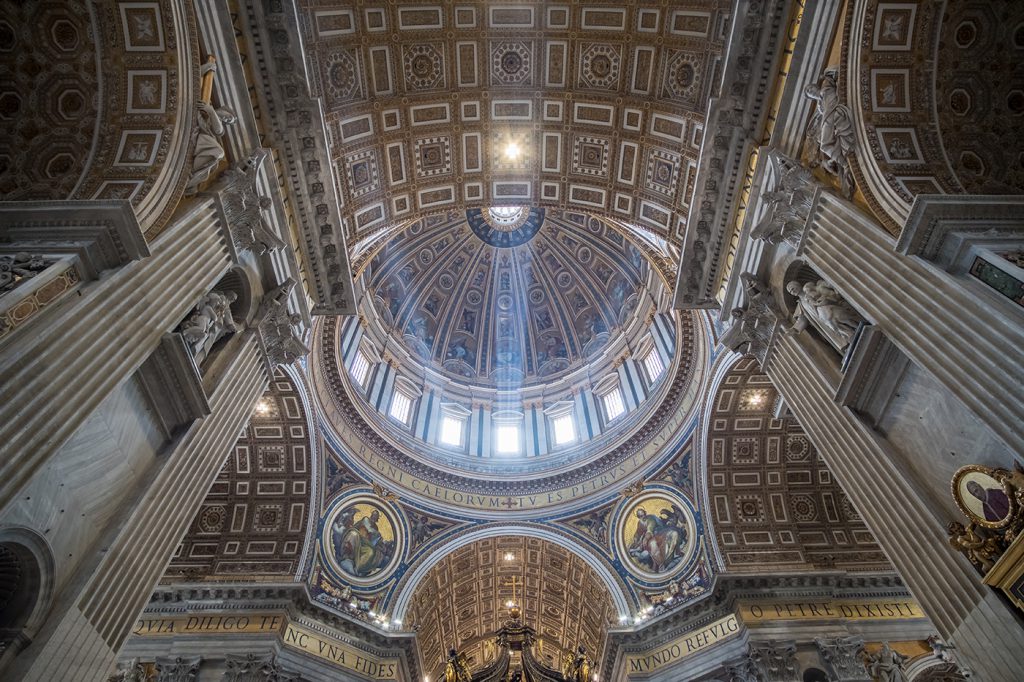If what we believe begins with Jesus and Scripture, what about the Church?
Certainly, belief in the Church belongs fundamentally to Catholicism. We say each Sunday in the Creed, “I believe in one, holy, catholic and apostolic Church.” There is no such thing as Catholicism without the Church. But why? How does belief in Jesus and Scripture fit with belief in the Church?
First, though, what does the word “Church” mean? In Latin the word is ecclesia, ekklesia in Greek, kirche in German, iglesia in Spanish. These words mean, roughly, “assembly” or “called meeting.” In secular Greek ekklesia named the demos or the polis, the people or the city. For Christians, what made their ekklesia distinct was that it was an assembly in Christ. These words likely correspond to the Hebrew word qâhâl, meaning “called assembly” — of either soldiers, or prophets, or elders and so on. “Qoheleth,” the name given as the author of Ecclesiastes, may come from this Hebrew word, and it means something like “preacher” or “caller.”
All of this gives us, at the very start, a basic image of the Church to help us conceptualize its nature. It is a body of people called into being, called together to form a community. The Church is described many different ways, employing many different images. Nonetheless, here at the start we get an idea of what the Church is from the very word itself: the Church is a called body.
But this raises further questions already. Called by what? Called by whom? For Christians, the answer is God in Jesus Christ. The Church is that assembly called together by him. When Jesus called the first disciples by the Sea of Galilee (Mk 1:17), when he called Levi (Mk 2:14), when he summoned the Twelve (Mk 3:13; 6:7), when crowds gathered around him and heard him say that his family is “whoever does the will of God” (Mk 3:35), that’s what he was doing — calling believers together into an ekklesia. And this, to put it simply, is how our belief in Jesus and Scripture leads to our belief in the Church. We believe the Church is called into existence by him and in him, by the Christ we discover in Scripture.
To see this connection between Jesus and the Church most clearly, it is helpful to read John 17. Speaking personally, for me as a Christian, this passage changed everything. Without wrestling with it, I would never have become Catholic. It remains a text that helps me see and think through almost everything. Now, that’s saying a lot, I know. But from this passage, I think it is possible to see the whole of Christian history, theology, and all Christian experience. Reading John 17 closely is like discovering the genome of the Church. It reveals, in a sense, the Church’s DNA. And that’s because when Jesus prayed that his disciples be one, as the Father and the Son are one, he revealed the form this called body, his body, should keep. Just as when he prayed that his disciples be consecrated and sent, he revealed the Church’s holiness and apostolicity.
So, what we read in John 17 is fundamental and of lasting importance for understanding the Church today. As Pope St. John Paul II argued, “This unity, which the Lord has bestowed on his Church and in which he wishes to embrace all people, is not something added on, but stands at the very heart of Christ’s mission” (Ut Unum Sint, No. 9). Jesus’s prayer that his disciples be one belongs to the essence of the Church and to the essence of our understanding of it. What Jesus prayed for in John 17 — that the disciples be one, holy and apostolic — matters for the whole of Christian history. We see it in the Church in Acts 4:32 — which was “of one heart and mind,” an image St. Augustine loved so much — when St. Irenaeus argued against Gnostic rivals, that his readers avoid such heresies and “join themselves to the Church,” in St. Cyprian’s blunt teaching that “God is one, and Christ is one, and His Church is one; one is the faith, and one the people cemented together in harmony,” which “cannot be divided.” “Be my soul with the saints!” St. John Henry Newman cried out before converting to Catholicism, realizing this fundamental truth.
But why John 17? Because it’s what Jesus prayed for that final night before his death. It’s what he prayed as he was being betrayed by Judas and as the other disciples scattered in fear. A prayer to his Father just before the end, before his crucifixion: it belongs to his final expression, the testament of his final desire just before his death. By next sundown, he would be dead. John 17 offers us some of his final words. It is a special moment, an important passage of Scripture to say the least. As I said, it is important for understanding everything else we believe. Which is where we’ll turn next, to this special prayer of Jesus to his Father.
Father Joshua J. Whitfield is pastor of St. Rita Catholic Community in Dallas and author of “The Crisis of Bad Preaching” (Ave Maria Press, $17.95) and other books. Read more from the series here.

